Does the application must be modularized or can it be one module splitted in folders?
I can be modularized, but it must not. Modularization has benefits in compiled languages like Java or C++, because you can not introduce cycles between modules. E.g. if in Java a JAR B depends on JAR A, you can not introduce a dependency from JAR A to JAR B, because this would introduce a cycle and then JAR A could not be build until JAR B is build and vice versa.
Splitting into folders, packages or namespaces (depending on how your language names it) can make sense depending on your needs. Take a look at my answer to the question Who must create services with package modifier if I implement architecture from “Clean Architecture” book.
About the Business Logic, should it be only on Usecases?
All business rules should be placed in the use case layer or below, because the goal of the clean architecture is to make this part easy to test. The application specific business logic should be placed in the use cases, the application agnostic rules in the entities.
About inputs, could it be be on controllers or in domain(request) it self?
Separate the controller specific validation from the business validations. The controller specific should be placed at the controller level and the business specific in the use case and/or entity layer.
E.g. if you have a rest controller that consumes JSON and this JSON contains a date string. Then it is the responsibility of the controller to parse the string to a date object, e.g. as ISO date or maybe it tries to parse different formats. When you pass the parsed date object to the use case it is the responsibility of the use case to validate if this date is valid in the context of the use case. E.g. if you have a use case "ScheduleMeeting" the date should be in the future.
The use case layer should throws business exceptions like ScheduledTimeElapsedException. The controller layer can catch this exception and decide what to do, e.g. an rest service might return a HTTP status code and/or a JSON with a more detailed description, maybe a internationalized description depending on the language settings of the requesting client.
Repository
Is a repository a gateway? if so which layer it fits?
A repository is an interface that the use case needs to get entities from and to put entities into.
A gateway is the implementation that knows how to contact an external service or a database to get data from and store data to.

Let's suppose I have two entities on DB, Department and Employee. The business rule is: "to create a Department I MUST create its employees too, and only through Department".
In this situation what should I do?
Should I create two repositories and as I can only create employees when I create the Department, should I call the create() from Employee's repository through the Department repository?
You should apply the interface segregation principle and create a use case specific repository interface. This interface should only define the methods that the use case needs. Since the business rule is to create both, this interface could look like this.
public void MyUseCaseRepository {
public void persistDepartment(Department dep, List<Employee> employees);
}
If you apply the interface segregation principle the following other question should be answered too.
Should I create just one Usecase and create a gateway to orchestrate the repositories?
The implementation can then take responsibility for storing both or none.
You might think now "But then I move business logic into the gateway.". Read my answer to the question Should Repositories Throw Domain Errors.
Also about repository, can I call a Usecase through a repository? This makes me very confused, because theorically, the Usecase and the repository will have interfaces, and its implementations could be on the same layer, so is there any rule about it?
The clean architecture does not really give a statement about this. The repository implementations are located in the interface adapters layer like the controllers are. Thus theoretically they can access the use cases. But I think this is not the intention of the author. I think that Uncle Bob sees it more like the hexagonal architecture and the repositories are adapters while the controllers are ports. I would not call a use case from a repository implementation. Finally this question can only be answered by the author.

DTOs
May it have a second constructor expecting a "Input" and this constructor fill the respective fields?
I guess you mean a ResponseModel that is returned by the use case when you say "Input".
From an architectural point of view this is ok, because the DTO belongs to the controller or interface adapters layer and thus the dependency direction is correct.
But when the DTO's constructor reads the response model and fills it's fields, it also converts the response model's values to their DTO representation. Maybe you want to separate this conversion from the DTO itself and place it in a presenter implementation that can be tested in isolation.
Is there any rule if I have to create three "layers" of domains? Like DepartmentRequest, Department and DepartmentEntity? If not can I have only have two or one object for an entity?
You can see the rule in the clean architecture. The dependency arrows start at an outer layer and end on the next inner layer. There is no arrow that point e.g. from the controllers layer to the entities layer. Thus controllers should not access entities if you are very strict with the architecture.
If you put everything in one object, e.g. Department and you use this for almost everything, e.g. as DTO, as database entity and domain entity then you couple all these different responsibilities.
As a consequense you can easily break the DTO representation if you modify the way it is stored in the datase and vice versa. You can also easily break the database representation if you want to modify business rules and vice versa. And finally you can also break the DTO representation if you modify the business rules.
These objects look very similar, but they have different responsibilities because they serve different clients. Thus if you put everything in one object you will violate the single responsibility rule.
I can not tell you all the effects of a single responibility violation, because this goes far beyond this question.

